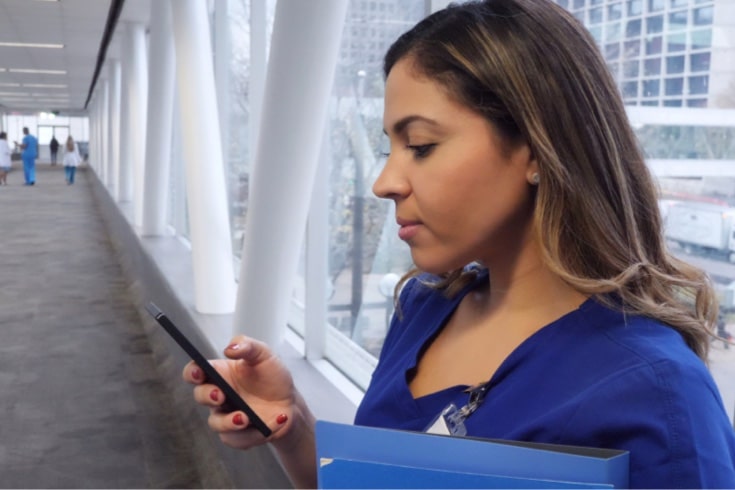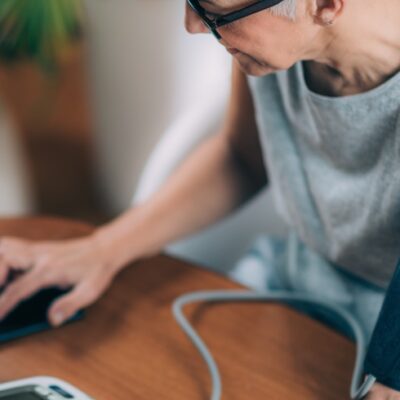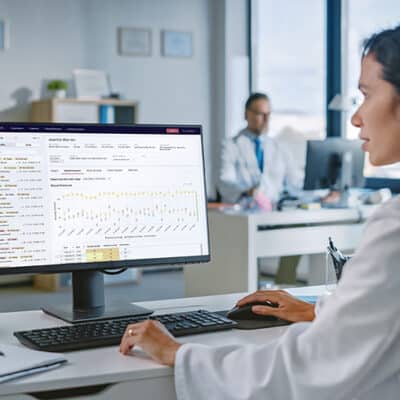The Growing Strain on Healthcare Staff
Consider the numerous manual tasks nurses and healthcare staff handle daily, such as scheduling, follow-up calls, medication refills, and taking vitals. Stress across the healthcare workforce has been building for years, and the problem was exacerbated by the COVID-19 pandemic, leaving many workers feeling fatigued, burned out and contemplating leaving the profession. In fact, 93% of healthcare workers reported stress, 86% anxiety, 77% frustration, 76% exhaustion and burnout, and 75% said they were overwhelmed.
A recent McKinsey and Company study reveals that resignations among healthcare workers have surged, rising from about 400,000 per month in 2020 to 600,000 per month in 2023. According to the American Hospital Association, up to 3.2 million healthcare workers will be needed by 2026.
The demand for healthcare services continues to rise due to an aging population and increasing rates of chronic disease. With more healthcare workers expected to exit the workforce over the next several years, these challenges will only persist and jeopardize access and quality of care if action is not taken.
How AI-Enabled RPM Can Help Ease the Burden
There is no single solution. But a multi-faceted approach that includes the use of innovative technologies may help ease some of the burden. For instance, AI-enabled remote patient monitoring (RPM) can offer a cost-effective solution by reducing many administrative tasks and improving efficiency and care.
AI-enabled RPM can significantly lighten the workload of healthcare workers. For example, a single nurse can monitor from 120 to 250 patients, ensuring timely intervention, as necessary. Integration with an AI virtual health assistant, such as Esper, can offer additional support with patient enrollment, engagement, reminders, and education, thereby enhancing adherence. Moreover, some programs provide full-service clinical monitoring support by RNs to help free up staff and offset the burden on practices.
Enhancing Patient Engagement with AI
AI virtual health assistants can also provide help with patient outreach via phone and SMS text communications. This intelligent technology engages patients through reminders and feedback, significantly enhancing patient accountability and care while streamlining the number of inbound calls to a practice. Unlike traditional customer service representatives, AI assistants provide 24/7 support and reduce wait times by offering immediate responses. Daily reminders and encouragement help ensure patients adhere to their care plans. By automating some of these routine duties, nurses and clinical staff can dedicate more time to patient-facing activities, thereby improving the overall quality of patient care.
Increasing Accountability Through Asynchronous Care
AI-enabled RPM offers numerous benefits, including the ability to provide asynchronous care. The availability of biometric data means patients don’t have to wait for follow-up visits or emergencies to adjust their treatment plans.
Patients benefit from knowing their providers are monitoring their health, which, combined with AI-driven reminders, fosters a strong sense of personal accountability. Regular monitoring of vital signs can also motivate patients to make healthier decisions, improving overall health outcomes.
Additional Benefits of AI-Enabled RPM
- Increased Adherence: RPM enables providers to monitor patients’ vital signs remotely, allowing for more timely interventions to prevent non-adherence and reduce unnecessary healthcare resource usage.
- Streamlined Billing and Reimbursement: RPM programs like 100Plus automate billing tasks, easing the administrative burden on clinical staff.
- Insights into Social Determinants of Health (SDoH): Certain RPM platforms collect data on SDoH, helping providers address non-medical challenges impacting patient health.
Looking Ahead
Given the current state of the healthcare workforce, it is unlikely that this mounting issue will be resolved solely through hiring. However, embracing technology, such as AI-enabled RPM, can help bridge the workforce gaps and enhance patient care. Automation and RPM technology will continue to be vital in reducing the routine, manual tasks burdening nurses and clinical staff, allowing them to focus more time on patient care and improving outcomes.
Start The Path Toward Better Patient Care
Have questions about how remote patient monitoring for healthcare will work for you and your patients? Let’s have a conversation.
Access the Latest RPM News
Stay up to date with the latest news, articles and webinars about remote patient monitoring and telehealth.
"*" indicates required fields



